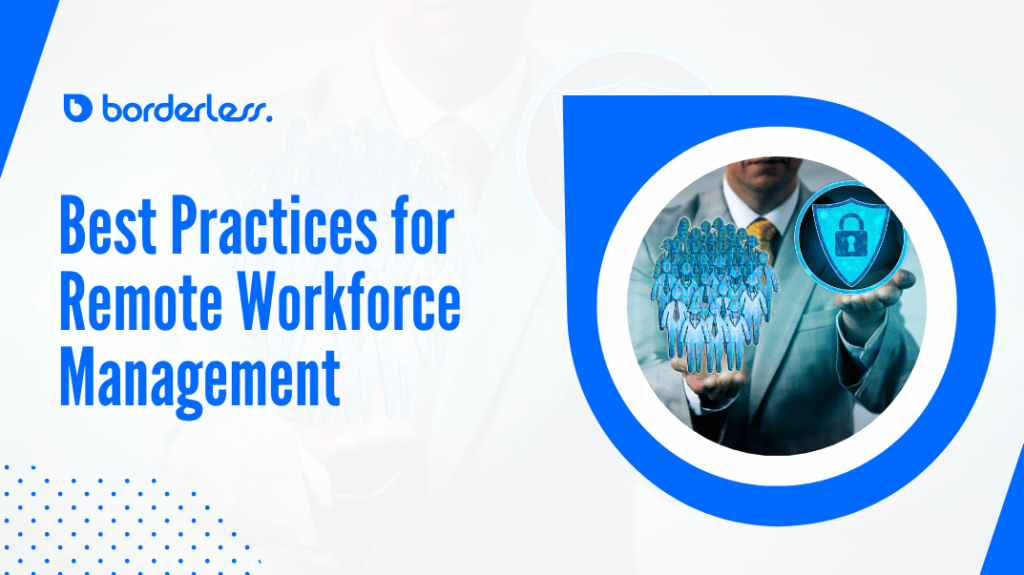Over the past few years, remote work has emerged as one of the most significant trends in the workplace. Companies have adopted this approach to improve employee productivity, reduce costs, and provide greater flexibility. However, managing a remote workforce comes with its own unique set of challenges. With the lack of face-to-face interaction, it can be challenging to ensure everyone is on the same page and working towards the same goals. This article will explore the best practices for managing a remote workforce. With proper preparation and planning, you can ensure that your remote employees remain productive and achieve their goals. Whether you are new to remote workforce management or looking to refine your existing strategies, this guide will provide you with the essential tips and tricks you need to manage your remote team effectively.
Establish Clear Expectations and Goals
To effectively manage a remote workforce, it is crucial to establish clear expectations and goals. This begins with communicating to each employee what is expected of them, what their responsibilities entail, and the overall goals of the company. In addition, it is important to establish performance metrics that can be used to evaluate each employee’s progress.
Setting clear expectations and performance targets requires defining the job role and tasks for each employee and providing detailed instructions on how to complete them. It is also essential to set realistic goals and deadlines for projects and establish milestone markers to keep employees on track. Regular feedback is necessary to ensure performance is on target and to provide guidance and support when needed. Additionally, recognizing employees’ achievements and successes in meeting goals in a timely manner can provide an extra boost of motivation to the remote workforce. By implementing these best practices, managers can effectively manage a remote team and ensure that their employees are productive and successful.
Use Collaboration Tools
Technology plays a crucial role in managing a remote workforce, and collaboration tools are essential to keep employees connected and productive. With the help of these tools, remote teams can communicate and collaborate in real time, regardless of their location. Popular collaboration tools such as Slack, Zoom, and Trello provide remote workers with the necessary tools to stay connected, share ideas, and work together toward common goals.
It is crucial to ensure that your remote employees have access to the right tools and technologies to support their work. Collaboration, communication, scheduling, and project management tools can help make remote work more efficient and productive. However, it is also important to establish clear guidelines for using these tools and evaluate their impact on performance. This ensures that employees are using the tools effectively and are not overwhelmed with excessive communication or distractions. By utilizing the right technology and establishing clear guidelines, managers can help their remote workforce stay connected and collaborate efficiently towards achieving shared goals.
Create a Remote Workforce Management Policy
A remote workforce management policy is a set of guidelines that outlines how remote work will be managed within the company. This policy should cover topics such as work hours, communication expectations, and security protocols. By creating a clear policy, employees will know what is expected of them and how to stay compliant with company policies. This will help to ensure that employees are working in a safe and productive environment while reducing the risk of any legal or financial issues that could arise from non-compliance. Additionally, having a clear policy will help to maintain trust between employers and employees as both parties know what is expected and required from each other.
Maintain Regular Communication
Regular communication is a crucial component of managing a remote workforce. Managers must establish regular check-ins with each employee to discuss progress, provide feedback, and address any concerns they may have. These check-ins can be conducted through video conferencing or phone calls and should be scheduled at regular intervals to ensure that everyone stays on track.
To effectively communicate with remote workers, it is important to establish regular channels of communication and provide training on how to use them. Managers should invest in appropriate technology, such as video conferencing software, messaging apps, and project management tools, to facilitate seamless collaboration among teams. Encouraging open dialogue and fostering feedback from employees can ensure that everyone is on the same page, and any issues are addressed quickly. By implementing an effective communication strategy, managers can keep their remote workforce engaged, motivated, and productive.
Provide Adequate Training and Support
Remote workers may require additional training and support to ensure that they can work effectively from a remote location. This may include training on new software or tools, as well as guidance on how to stay focused and productive while working from home. Managers should also be available to provide support and answer any questions that arise. They should actively encourage employees to reach out when they need help and be available to provide guidance. They should also be willing to listen to any concerns that employees have and take action if necessary. Additionally, managers should provide regular feedback and recognition for employee efforts, as well as create a safe environment for employees to express their opinions without fear of repercussions.
Focus on Results, Not Hours Worked
Remote work offers employees the flexibility to work on their own schedules, but it also requires managers to focus on outcomes rather than hours worked. By setting clear performance metrics and goals, managers can evaluate each employee’s performance based on their results, rather than the amount of time they spend working. This approach helps managers to maintain a results-driven culture and hold employees accountable for achieving their objectives.
To ensure that remote teams meet project deadlines, managers must establish clear timelines that include detailed milestones for each task. Encouraging collaboration among team members ensures that tasks are completed on time. Regular check-ins with team members allow managers to ensure that the team is on track with their work and provide support and guidance as needed. By setting and enforcing clear deadlines, managers can keep remote teams productive and on schedule.
Foster a Positive Company Culture
Finally, it is important to foster a positive company culture, even when it comes to remote workforce management. This can be done by organizing virtual team-building activities, recognizing employees for their hard work, and creating a sense of camaraderie among team members. By fostering a positive company culture, employees will feel more connected to the company and more motivated to work towards its goals. This can be done by implementing activities that promote team building, providing a supportive work environment, and encouraging open communication between employees and management. Additionally, offering competitive compensation and benefits packages can help to ensure that employees feel valued and appreciated. Finally, celebrating successes and recognizing individual contributions will help to create a positive atmosphere where everyone feels appreciated.
Conclusion
In conclusion, remote workforce management requires a different set of skills than managing a traditional workforce. By following the best practices outlined in this article, managers can ensure that their remote teams stay productive, engaged, and focused on achieving common goals. With the right tools and strategies, managing a remote workforce can be a rewarding and effective way to build a successful and thriving company.







